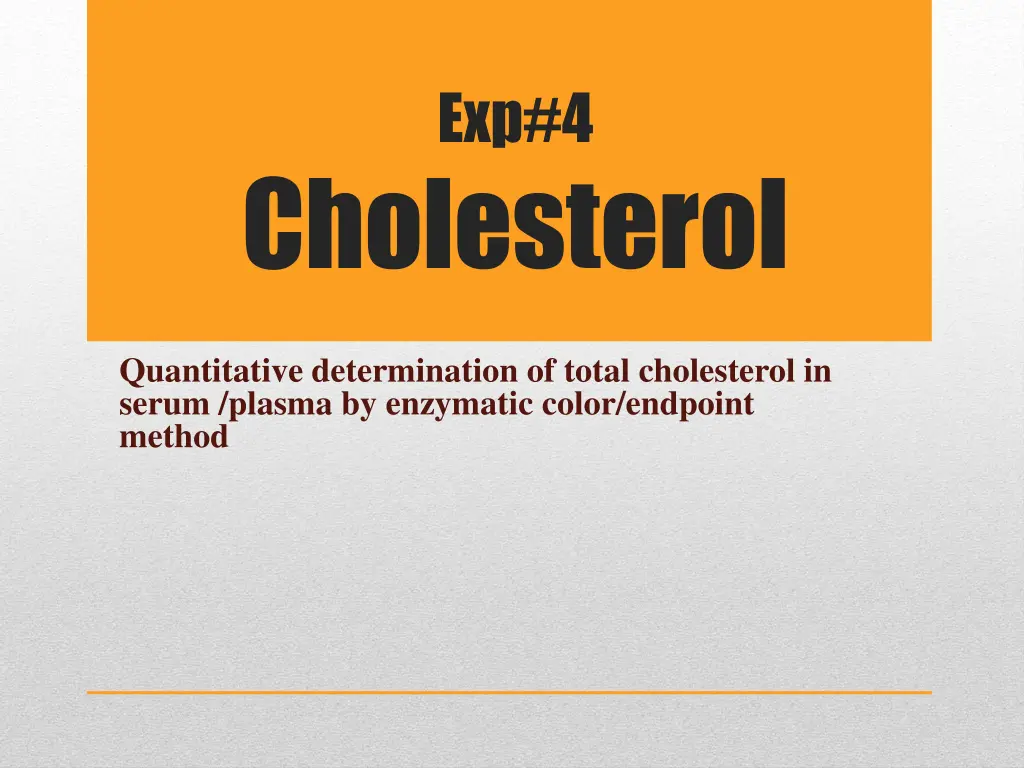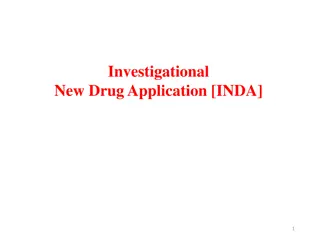
Quantitative Determination of Total Cholesterol in Serum/Plasma
"Learn how to quantitatively determine total cholesterol levels in serum or plasma using an enzymatic color/endpoint method. Cholesterol plays a vital role in various bodily functions and is a significant risk factor for heart disease. Discover the principle, procedure, and calculations involved in this crucial diagnostic test." (299 characters)
Download Presentation

Please find below an Image/Link to download the presentation.
The content on the website is provided AS IS for your information and personal use only. It may not be sold, licensed, or shared on other websites without obtaining consent from the author. If you encounter any issues during the download, it is possible that the publisher has removed the file from their server.
You are allowed to download the files provided on this website for personal or commercial use, subject to the condition that they are used lawfully. All files are the property of their respective owners.
The content on the website is provided AS IS for your information and personal use only. It may not be sold, licensed, or shared on other websites without obtaining consent from the author.
E N D
Presentation Transcript
Exp#4 Cholesterol Quantitative determination of total cholesterol in serum /plasma by enzymatic color/endpoint method
Cholesterol is a fatty substance found in blood, bile and brain tissues. It serves as a precursor to bile acids, steroids and vitamin D. The determination of serum cholesterol is a major aid in the diagnosis and classification of lipemias,hepatic and thyroid diseases -High blood cholesterol is one of the major risk factors for heart disease. -Major dietary sources of it cheese, egg yolks ,beef, fish, and shrimp
Principle The cholesterol present in the sample originates a colored complex, according to the following reaction: Cholesterol esters + H2O CHE Cholesterol + F.A CHOD Chol+ O2 Cholestene-3-one + H2O2 POD 2H2O2 + Phenol + 4-Aminoantipyrine Quinonimine( red color) +4H2O
CHE= cholesterol esterase CHOD= cholesterol oxidase POD= peroxidase This dye is proportional to the cholesterol concentration of Cholesterol in the sample *Specimen: Serum or heparinized sample
Procedure Blank Std Test Chol Rgt-ml 1 1 1 Pre-warm at 37 C for 3min then: Std- l --- 10 --- Sample- l --- --- 10 Mix and incubate at 37C for 10 min, then read Aat 505 nm
Calculation A test X Conc. Of Std(200 mg/dl)= Chol (mg/dl) A Std *Normal Range: Desirable ..<200 mg/dl Borderline high ..200-239 High . 240
Interfering substance Anticoagulants, such as fluoride and oxalate will result in false low values. The test is not influenced by hemoglobin values up to 200 mg/dl or by bilirubin levels up to 10 mg/dl. Interference from grossly icteric and heavily hemolysed specimens is correctable by use of a serum/ plasma blank.
Limitation This reagent is linear up to 500 mg/dl. Samples with value of above 500 mg/dl should be diluted 1:1 with isotonic saline and re- run. Multiply the final results by two (2). Grossly lipemic serums require a "sample blank". Add (10 l) of sample to 1.0 ml saline, mix and read the absorbance against water





















